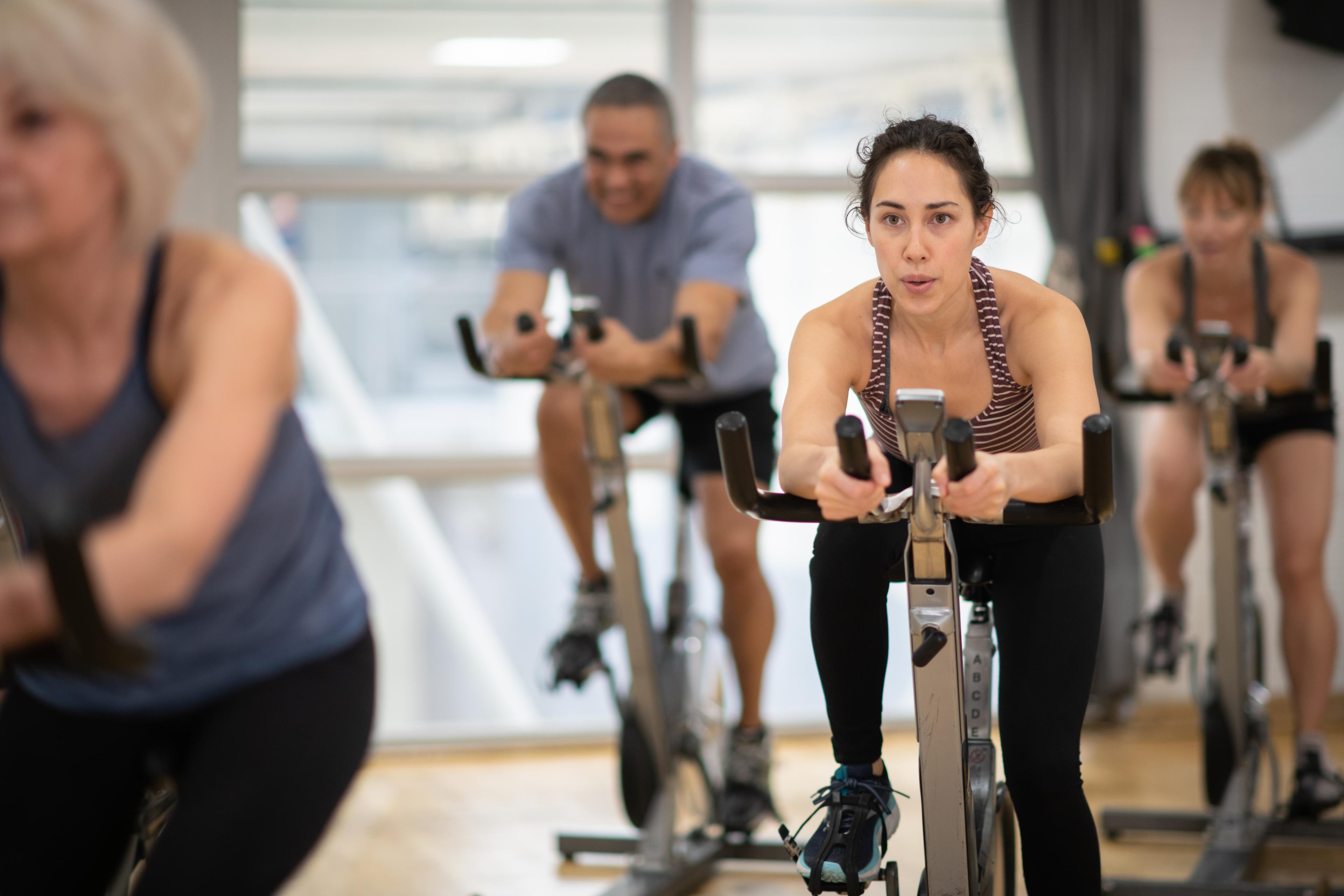How to Build Endurance on an Exercise Bike
A Healthier Michigan
| 4 min read

Exercise bikes are a popular form of exercise in the United States. During the past decade, at least 6 million people have taken up stationary cycling, and the exercise bike industry is expected to be a nearly $700 million dollar industry.
Exercise bikes are handy in cases of inclement weather, in cold winter months or when you want to get a good workout while watching television or listening to a podcast. But are exercise bikes effective at building up physical fitness and endurance?
How do exercise bikes affect endurance?
Exercise bikes can help to improve fitness and endurance in several ways. Not only do exercise bikes work multiple muscle groups, including the core muscles, calves, quads, hamstrings and glutes, they also exercise the respiratory and circulatory systems and can even help relieve mental fatigue or anxiety symptoms.
You may not think of biking as strength training, but with the resistance and incline settings available on many stationary bikes, they can be very effective at building lower-body strength especially. Strength training increases endurance. Exercise bikes also lend themselves to longer workouts because they’re low-impact and done in a sitting position. On an exercise bike, you can incorporate intervals into a workout, allowing you to build up intensity and resistance over time. Long aerobic workouts exercise the respiratory and circulatory systems, which increases endurance and reduces fatigue. Increased oxygenation also helps our bodies recover and heal faster from both illness and injury.
Tips for building endurance on a stationary bike or exercise bike
Here are tips on using a stationary bike to build endurance and strength:
Start slow and increase resistance gradually
When starting a new exercise routine, start at a slower pace and lower resistance to reduce the risk of injury and burnout. Allow your body time to adjust to the demands of the workout and gradually increase your resistance and pace in intervals during the next weeks and months.
Don’t overdo it – listen to your body
Like the need to start with easier intensity, the same goes for duration. Listen to your body and slow down or stop the workout if you are struggling to breathe, feel pain or form blisters. Make sure you warm up and cool down at the beginning and the end of each session. Consistent, shorter workouts are healthier and will increase your fitness more than rarer, marathon length exercise bike sessions.
Wear comfortable clothing
Make sure you dress for success – in this case that means comfortable, breathable clothing that isn’t loose and can’t get caught on the bike. You also may want to remove jewelry or put your hair up. This can make the workout more comfortable and enjoyable as well as prevent injury or overheating from improper clothing.
Drink water
Just like any workout, exercise biking requires proper hydration before, during and after the workout. Keep your water bottle within reach during your workouts, and drink 8 to 16 ounces of water per hour during exercise.
Adjust your goals as needed
Setting goals can help you stay motivated. One approach is SMART goals; or specific, measurable, achievable, relevant and time-based. What are you looking for out of an exercise bike routine? What endurance, strength and fitness goals do you have in mind? For example, you could have a goal to work up to an hour of biking three days a week. You can adjust your goal if you are struggling or if you find it too easy. Give yourself a realistic window of time to achieve your goal, such as starting with 15 minutes three times a week and slowly increasing to hourlong sessions in four months.
Don’t forget to cross train
While exercise bikes are a great option for lower body strength training and building endurance, they don’t work out every muscle in your body. You may still want to cross train with other workouts or sports. One study showed that exercise biking after an upper body strength workout improves the efficacy of strength training, so you may find cross training makes all forms of exercise feel easier and more effective.
Photo credit: Getty Images





